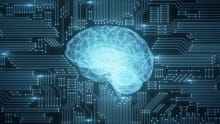L&D trends: Consumerization and Challenges
Get Set Learn Read similar articles

Companies today are in a period of rapid transformation. Owing to both external conditions like the changing economic environment and internal changes like multi-generational workforce, business heads find themselves focussing more on sustainable short-term changes within the company. As businesses scale, a company’s workforce becomes crucial in ensuring its performance stays in tune with the predicted estimations. And for a multigenerational workforce with diverse demands, it becomes crucial to upgrade employees’skill sets to ensure their productivity is in tune with business expectations.
Here is where the L&D function, within the ambit of HR, becomes an important factor in determining how well the company’s employees--and by default, the business--perform. Although there are multiple layers that impact employee performance, effective learning interventions are crucial in ensuring that employees have the necessary skills to contribute to business productivity.
Consumerization of content
As the usage of the internet matures, one finds that more and more employees are resorting to Google, YouTube, and other web-based sources to chart their own learning journeys. Learning professionals today stand to leverage multi-modal learning options coupled with the latest delivery platforms to curate the right development journeys for employees while giving them choices and control over their own paths. With a shift in focus from a classroom-based learning model, learning professionals stand to greatly benefit from the consumerization of content and user experience.
Since the fundamentals of curiosity and knowing remain the same today, employees can pick and choose their learning content from the options provided and curated by L&D leaders of the organization. “Consumerization is one of the biggest trends within the L&D field today,” saysVinay Pradhan, the Country Manager of India at Skillsoft. “It stems from the idea that as consumers, individuals get the option of picking and choosing the products to their liking. When it comes to learning, an individual would want a similar experience.” L&D professionals need to look at building learning programs modeled after these types of consumer experiences, as well as hyper-personalized of content for learners.
Challenges facing L&D leaders
In this era of information, learning professionals need to understand their role in creating their company’s learning ecosystem. One of the major challenges that L&D professionals face is the need to understand their target audience better. They often lack visibility into the different needs of diverse populations of workers—this knowledge would allow L&D leaders to accurately map out employee expectations and make learning relevant for each employee.
Another challenge is using the right methodologies to create a suitable learning program, which can contextualize learning for the employee while helping the business meet its talent demands. L&D professionals must understand concepts like gamification and social learning to meaningfully apply them in their learning programs. There are various ways that learning methodologies can be modified using technology and made more relevant for employees.
This often becomes a problem due to the difficulties that L&D professionals face when it comes to navigating the learning technological space. As tech offerings get more nuanced, there lies higher chance of L&D professionals losing focus on the actual change that they bring about. “The real trick moving forward,” according to Vinay, “will be to design a learning ecosystem which is simple and effective, by ensuring that the learning needs form the core of one’s technological adoption. The combination of engaging content with beautiful technology will always deliver impact.”
Moving ahead, one finds that L&D professionals also need to bring business acumen to the table. In order to ensure that all senior stakeholders support the necessary innovations within learning programs, L&D professionals need to be better at creating a business case for such changes. Most technological adoption processes require significant investments--to demonstrate the impact of that investment, learning leaders must be able to connect training results to better performance.
In conclusion
Today's business conditions– some call it the VUCA (volatile, uncertain, complex, ambiguous) world - have created a mandate within organizations to be agile—to have a swift response to changing market conditions and evolving consumer preferences. With the boundaries that traditionally demarcated industries blurring, companies today require an L&D function that can respond to changing talent demands on a real time basis.
It's times like these, according to Vinay, that L&D professionals need to let go. “A lot of times,” he says, “one finds L&D bringing in innovations and sticking to them even when the external market has changed. They need to be wary of over-depending on set standards. The beauty of innovation is that it’s a commitment to constantly trying something new while also letting go of certain practices.” This holds true for most companies today as they seek to maximize productivity while ensuring that their employees have exciting and relevant learning journeys.





